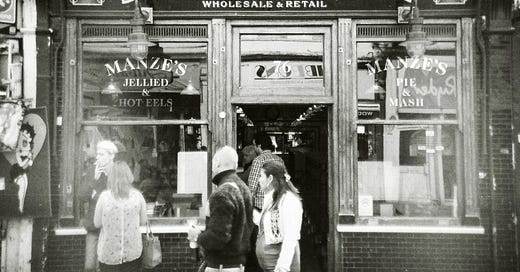Hi and welcome to your weekend newsletter 👋

This week looking at London’s long and storied history of eating eels.1
While I was reading up on the history of Billingsgate Fish Market for last weekend’s newsletter, I ended up getting sidetracked for a while with the discovery that the one exception to the original trading laws for the market (the 1699 Act of Parliament which established Billingsgate as ‘a free and open market for all sorts of fish whatsoever’) was the monopoly to trade eels granted to Dutch fishermen moored in the Thames, an acknowledgment of the critical role they’d played in keeping Londoners supplied with food following the Great Fire.
It’s a sidetracking that led me to all sorts of articles, podcasts and archive material that showed how fundamental eels were to daily life in London at different times in the city’s history. It was a food that crossed social classes; in early medieval London it became a pseudocurrency, with taxes and rent sometimes being paid in eels, and prices often quoted in sticks of eels rather than pennies. And in the 20th century through to present-day London, it’s become an indicator of wider social shifts: with the market for jellied eels shrinking in the city and moving towards the coast.




